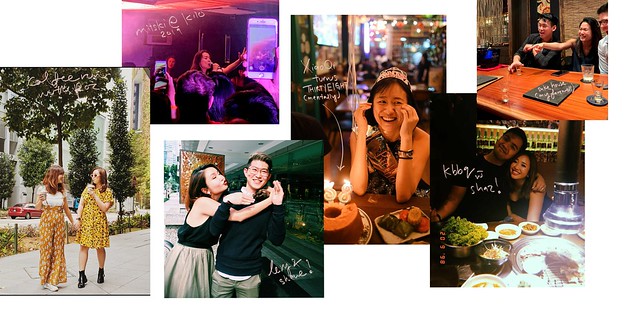Reader,
Ten years ago, I visited New York for the first time, fell in love with the city, and swore that I would live there someday.
A year ago, after being accepted to my dream MFA program at Columbia University, I swapped out one bustling metropolis for another, and left everything behind to pursue a writing career in New York City.
Four months ago, New York unexpectedly bloomed into the global epicenter of the pandemic, and the word ‘unprecedented’ sprouted in every other sentence we exchanged.
Three months ago, I returned to Singapore to hunker down and weather it out.
And at this point in writing, half my life is there; I still don’t know when I will be able to return.
When I first returned to Singapore, these conversations dominated much of our family dinners. And yet, as my parents eventually pointed out, for anyone who has grown up in Singapore, this experience of passing through waves of change is not new. Singapore is a city characterised by continual onward progress – just three years is enough to see the cityscape evolve – and the Singapore of my childhood is not the one of my parents’ childhood, nor my grandparents’. In fact, within my lifetime alone, the country has changed drastically: it surfaced that my youngest sister has never known the pleasures of scratching manga drawings on a classroom’s chalkboard or switching out transparencies on an OHP; hers is the generation of the smartboard. What more the change that my parents have lived through?
Before the pandemic, my father used to go on these long, meandering walks, starting at 3 or 4am, and ending 10km later, somewhere in the middle of the city. Whenever I joined him (for lunch, not for his marathon walks under the equatorial sun), he would point out what each place we passed used to be. The jazzy NCO Club where my girlfriend Roz got married, for example, was once a recreational club for the SAF during his army days. Tanjong Pagar’s Duxton Road Police Living Quarters, now defunct, was where my mother used to stay while studying for her O levels, crashing with her classmate’s older policewoman sister. Further down the road, my dad was a student at Gan Eng Seng secondary school, once upon a time. If you go along Anson Road today, where the school used to be, you’ll see swarms of working professionals emerging from the underground Tanjong Pagar MRT entrance, disappearing into one of the high rise buildings that characterise our Central Business District: AXA Tower, Twenty Anson, International Plaza. Both my parents, actually, attended primary and secondary schools that either no longer exist or have moved campuses; both my parents lead lives, accustomed to change.
Tanjong Pagar is a neighborhood I am familiar with, due to its proximity to my old office on Hong Kong Street – I’ve spent many post-work evenings catching up with friends over chicken and beer at any one of the numerous Korean eateries along Tanjong Pagar Road, or enjoying live music along a club street bar. But as we walked, and as my father pointed out the past lives of these buildings, a different version of Singapore that I’d never been acquainted with emerged, rich with the personal history of my father’s lived experience, accessible again through conversation, memory, and retelling.
My internet dive into the Sago Lane death houses brought up fascinating accounts of those who spent their childhoods there surrounded by nightly funeral rites, and uncanny stories about ghosts and corpses – before the 1983 Singapore River clean up, which included demolishing the shophouses on Sago Lane and putting a definite end to the multitude of funeral parlours there. As the country evolved, grew, and progressed, so did its landscape, ever shifting and renewing. Today, one might cross the patch where Sago Lane once stood, never becoming aware of the rich history that went before, if not for these stories that remain passed around, both in memory and archived online. At the end of the day, when properly documented, memories, stories, and histories are the only things that can truly withstand generations of change.
What matters to you, what is worth remembering? Write it down. Photograph it. In facing this time of change, we still don’t know what’s to come. But at least we’ll have our present, a chorus of memories that will form our heritage, for years to come.
X
Jemimah
This essay was written as part of Singapore Heritage Festival 2020. For more about Tanjong Pagar’s history, check out the Singapore Heritage Festival website here.




